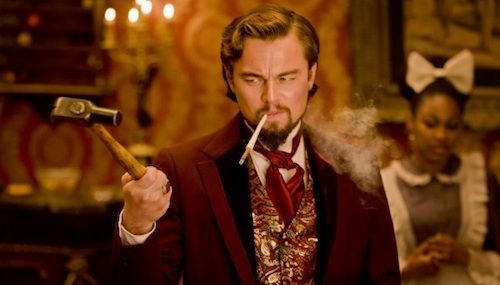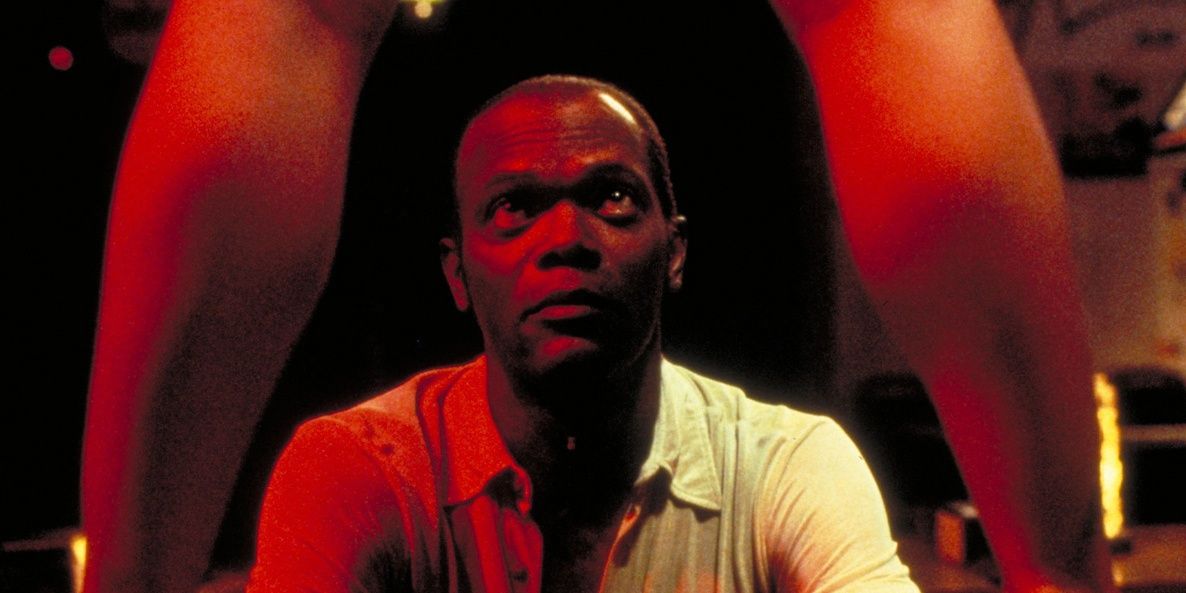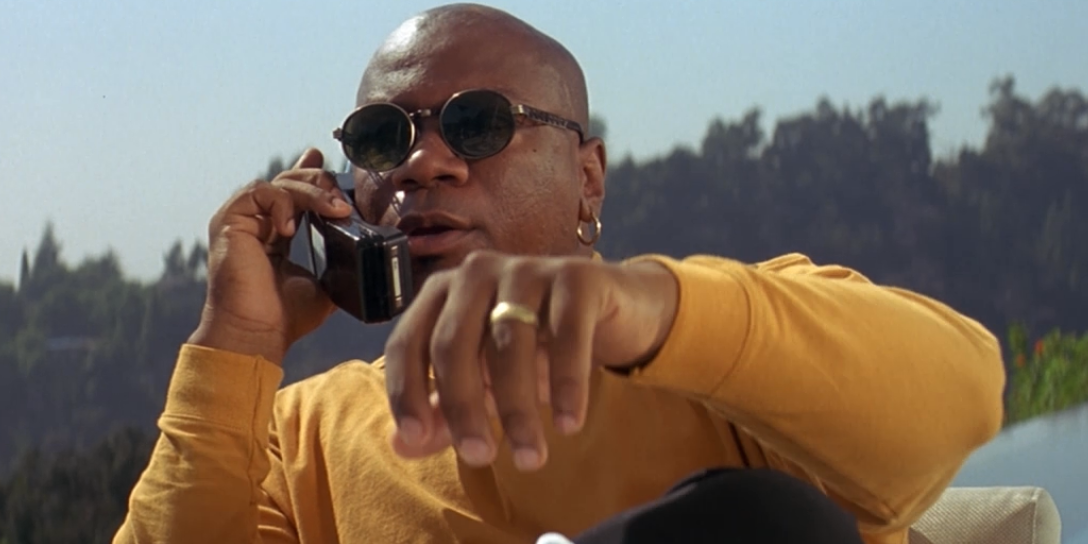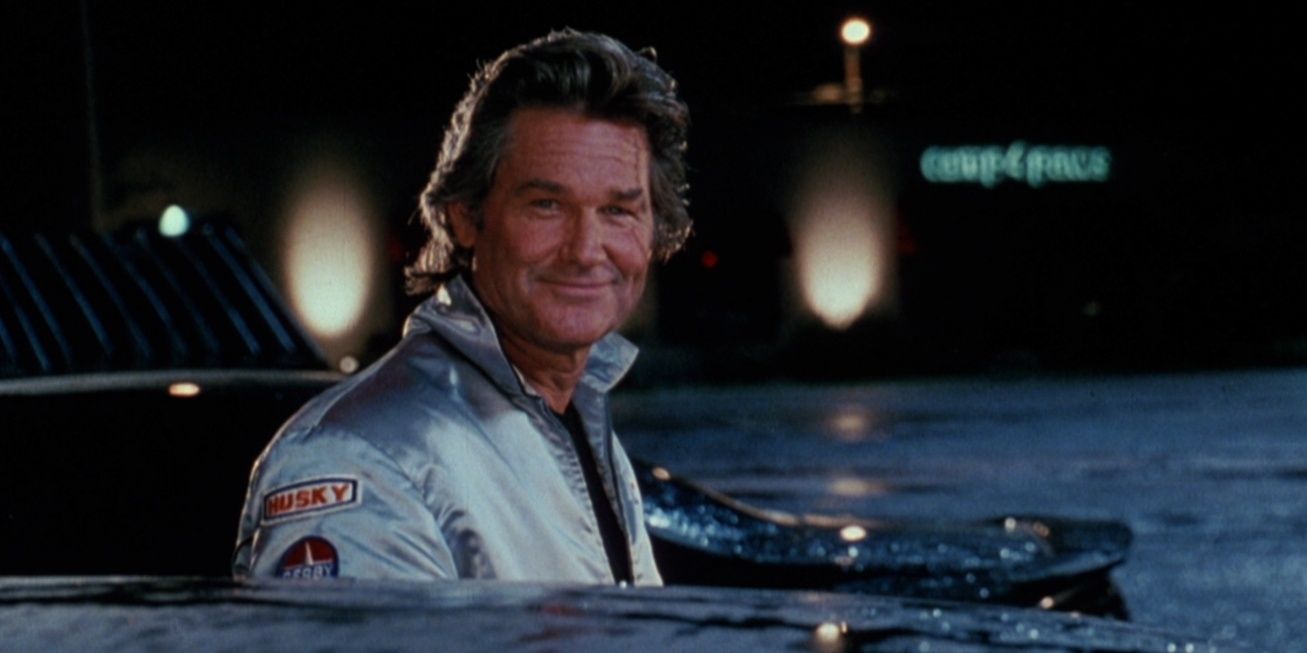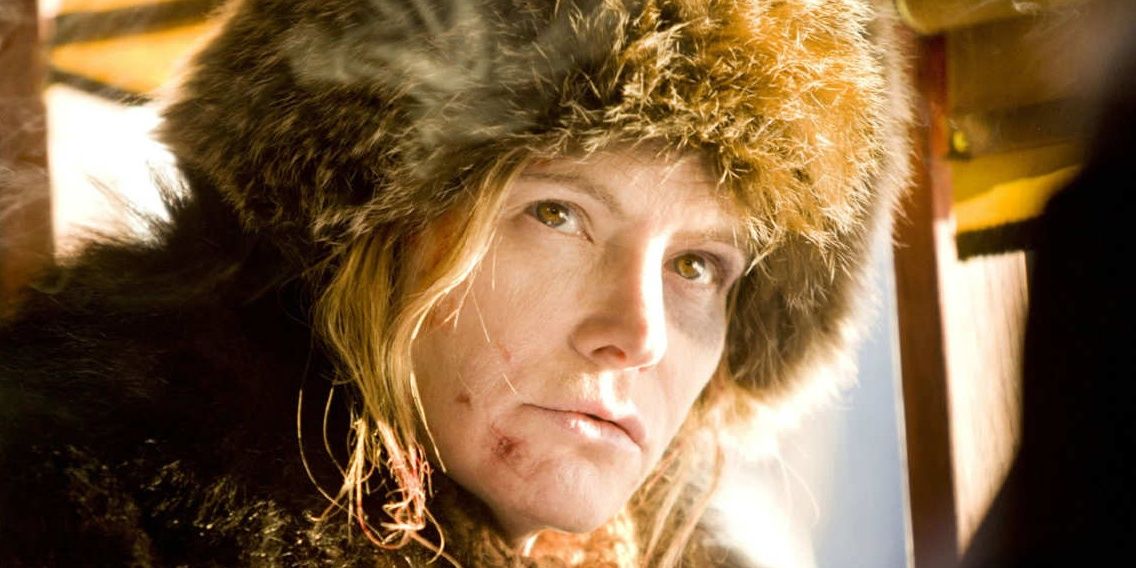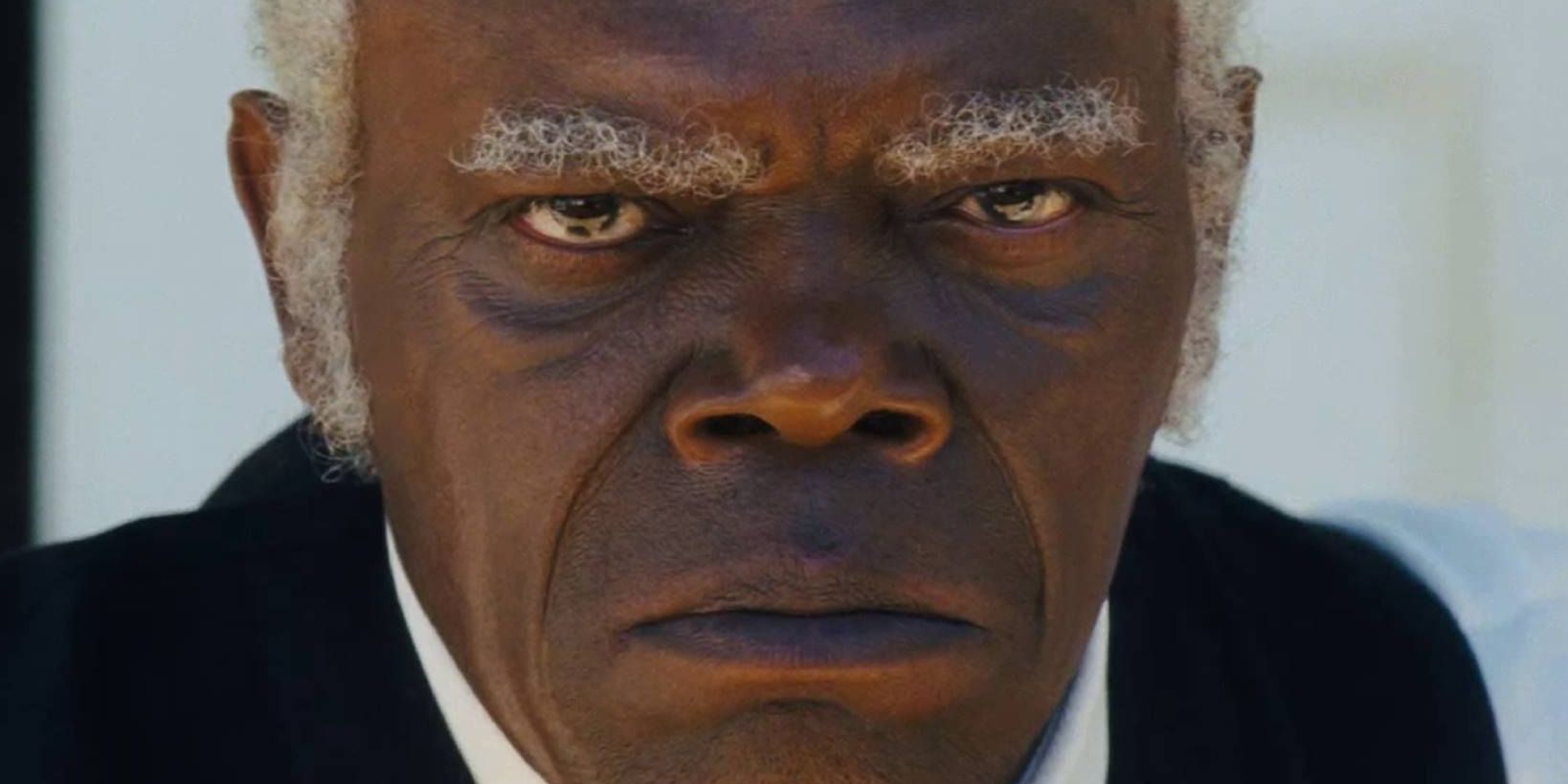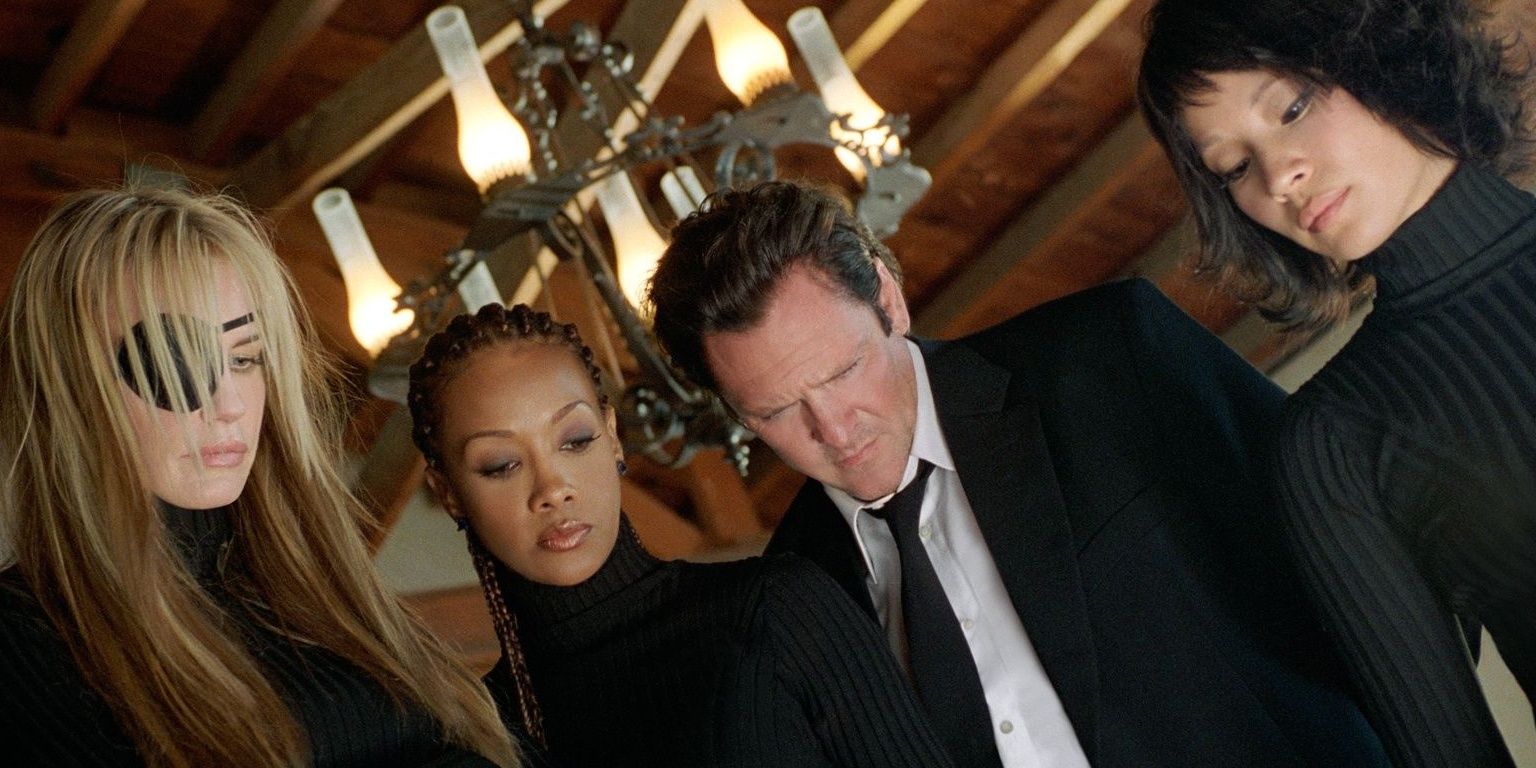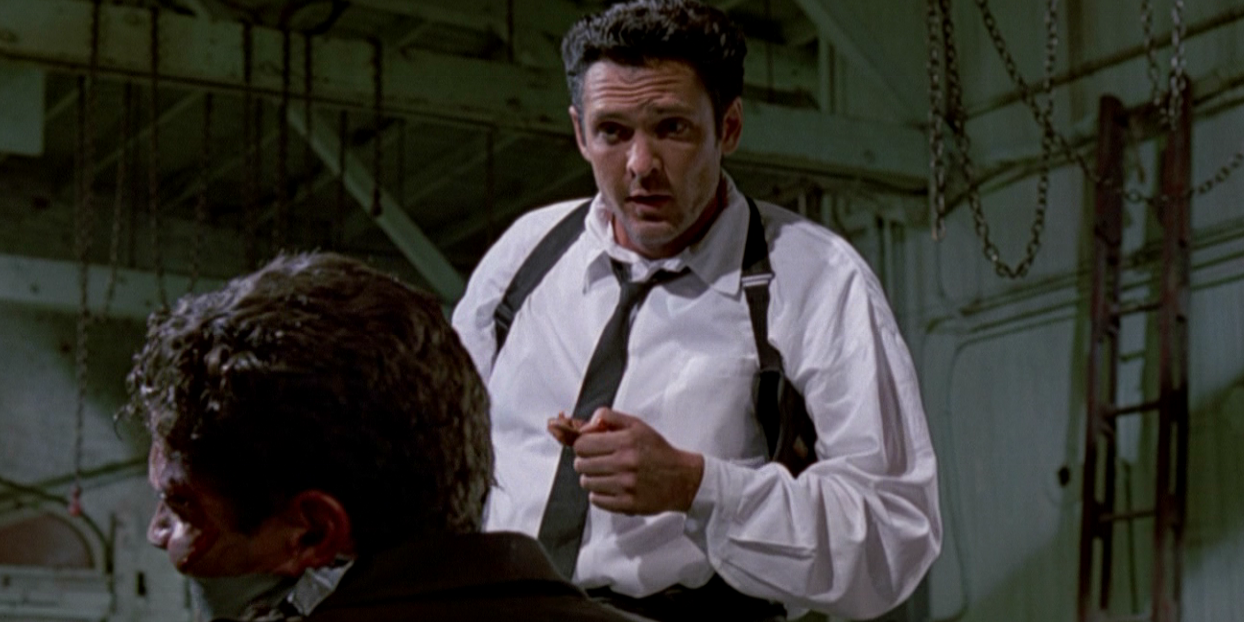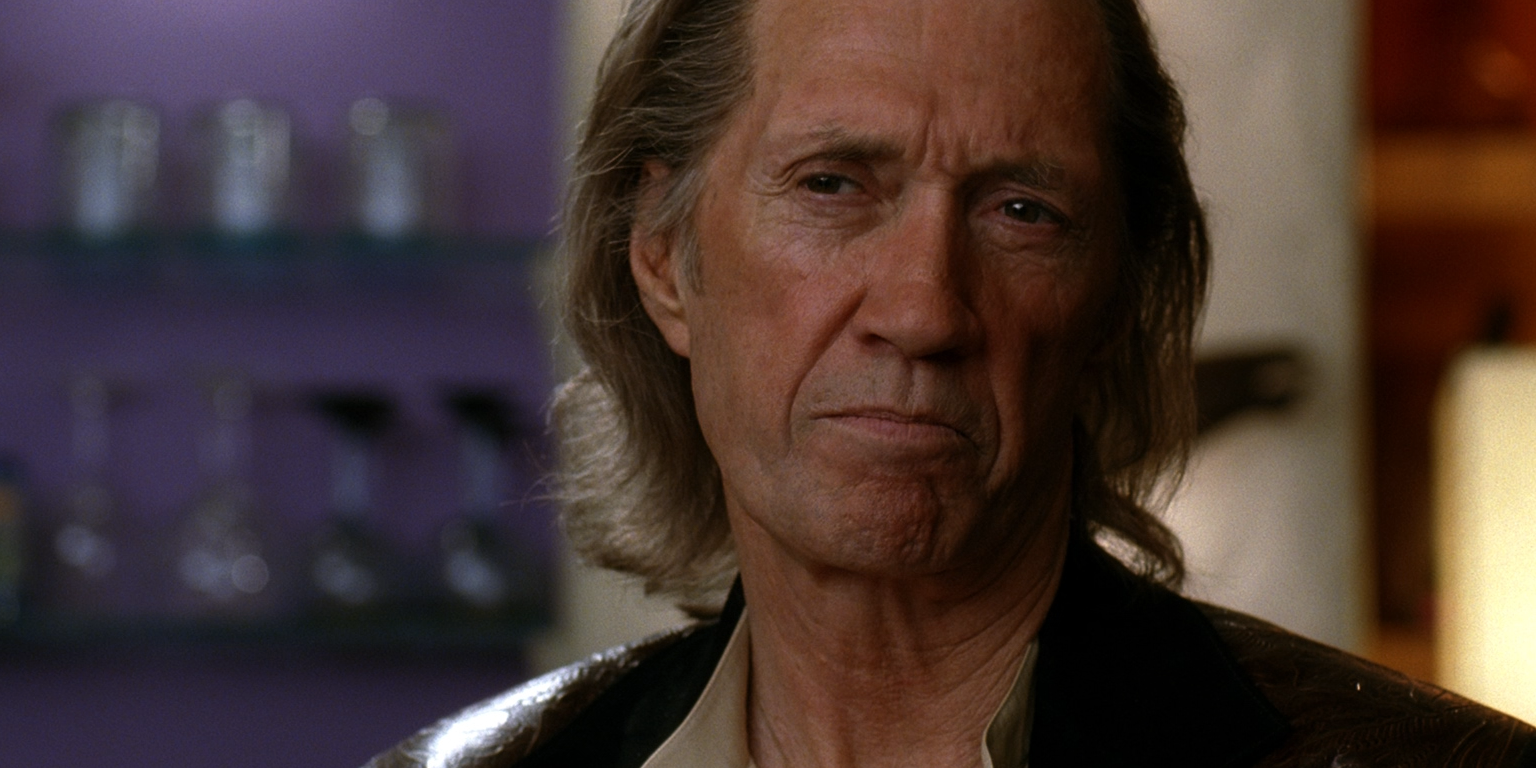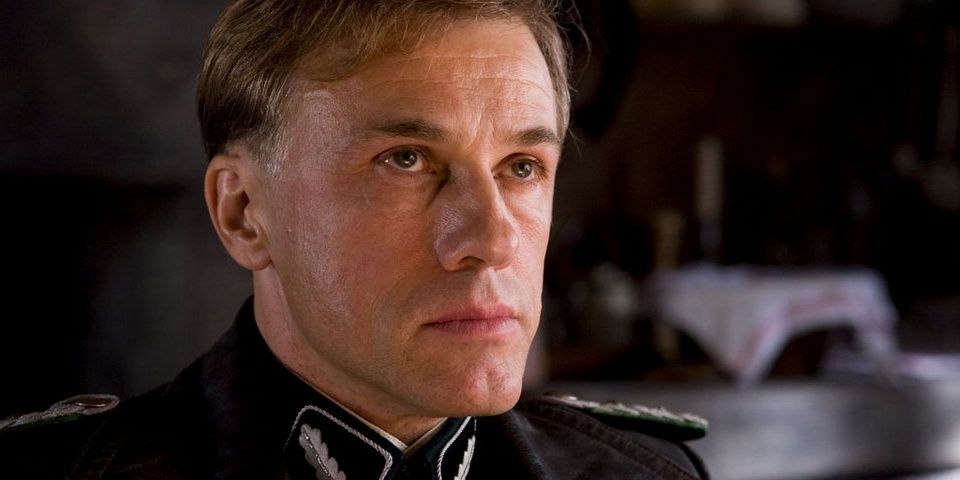As one of the most influential and celebrated filmmakers of the 21st century, Quentin Tarantino has made a name for himself not just for the ways in which he filters genre cinema into high art or stylizes violence, but also for the interesting characters he creates. It is rare that an artist can build a role around an actor, tailor it to their specific strengths, and tease out career-best performances from both Oscar golden boys and forgotten exploitation film stars. Yet, Tarantino's films are packed with instantly iconic heroes, villains, and sidekicks as unforgettable as they are fascinating. Below, we list and rank his ten best villains.
Ordell Robbie
Despite easily being the least interesting of Samuel L. Jackson’s roles for Tarantino, Ordell Robbie still oozes enough menace and oily charisma to make him a standout.
Based on a novel by Elmore Leonard--the only Tarantino film with a literary origin--Jackie Brown (1997) concerns a flight attendant (Pam Grier) who finds herself in a heap of trouble when she’s caught smuggling money for Jackson’s arms dealer. Given the choice to either cooperate with the feds to bring down Robbie or face jail time, Brown hatches a plan to double-cross both parties.
Tarantino pulled one of his trademark career resurgences for Grier and played her opposite one of his favorite modern actors. This makes Jackie Brown spark even when its plot machinations feel a tad sluggish. Jackson brings his own particular panache to the slick Robbie, playing him as an endlessly likable manipulator and con-man with a strange conception of loyalty.
Marsellus Wallace
It’s arguable that Marsellus Wallace (Ving Rhames) is more effective and frightening as a little-seen, off screen presence in the earliest portion of Tarantino’s breakout hit, Pulp Fiction. The crime boss looms over the film from the first scene, when hitmen Jules Winnfield (Samuel L. Jackson) and Vincent Vega (John Travolta) dissect the rumor that he threw a man out of a high-rise window for giving his wife (Uma Thurman) a foot massage. When we do in fact, first see Wallace it’s from behind--a conspicuous band-aid stretched across the immense expanse of his bald scalp--as he orders boxer Butch Coolidge (Bruce Willis) to throw his next big fight.
The fact that midway through the film, Butch runs him over and the two are subjected to rape and torture in the infamous “gimp” scene does take some wind out of Wallace’s sails, but when he finally gets the upper hand, preparing to rain down holy terror on the attackers, Rhames delivers his speech like an angry god, playing Wallace as a villain of almost thunderous elemental force.
Calvin Candie
Leonardo DiCaprio is one of the finest actors of his generation, but Django Unchained was just another stop on his hunt for Oscar gold back when it seemed that he’d never nab one of the coveted statuettes. With Christoph Waltz having taken home the Best Supporting Actor award on Tarantino’s previous film, it’s no surprise that DiCaprio came sniffing around ready to have his way with some choice, Tarantino-penned villainy. The result was Calvin Candie--a childish, sneering, Francophilic plantation owner in the pre-Civil War American South who goes head to head against Jamie Foxx as the titular escaped slave in the hunt for his long-lost wife.
Oh, and he’s a racist, a fact hammered home repeatedly by the abject pleasure the character takes in torturing African Americans, his adoration of all things white (most famously, cake) and his belief in the study of phrenology. In fact, that’s the reason Candie is one of Tarantino’s least compelling villains. Not only does he feel like something of a Hanz Landa retread, but the all-consuming racism of the character flattens him out in a way: making him much more two-dimensional than almost any other Tarantino character. Still, Leo gives his all to bring this particularly loathsome beast to life, even going so far as to act through a scene with an openly bleeding hand, as seen in the final film, and that helps cover for the shallowness of Candie as a character.
Stuntman Mike
When quintessential 80s star Kurt Russell joined the Tarantinoverse in the film Deathproof, it seemed like a development that should have happened long before. The killer, known only as Stuntman Mike, is a former stunt performer who uses his car to smash up ladies in the latter half of the Rodriguez/Tarantino cinematic experiment and box-office bomb Grindhouse. Russell oozes charm, charisma, and proves himself adept at getting his tongue around some of the director’s choicest dialogue.
From his imposing car to his slick yet silly Icy Hot jacket, Mike is one of Tarantino’s most entertaining creations, and the automobile carnage that closes out the film’s first act is one of the director’s most insane and ambitiously nasty set pieces. Unfortunately, Mike is a bit of a baby when backed into a corner, and he becomes more of a punching bag (both literally and figuratively) in the film’s second half when he encounters a bevy of badass chicks hell-bent on giving him what for.
Daisy Domergue
Tarantino is a master at creating unfathomably cruel villains who an audience can't help but root for. With The Hateful Eight, he created a femme fatale who's hard as nails and harder to love. Jennifer Jason Leigh earned an Oscar nomination for her turn as Daisy Domergue, a diabolical outlaw who spends most of the snowbound Western chained to John Ruth (Kurt Russell), a bounty-hunter eager to see her hang for her crimes. Whip-smart, quick to drop a slur, and vulgar as they come, Domergue spells doom for the cabin full of men who underestimate her, and though The Hateful Eight has received some flack for the constant barrage of brutality Leigh receives at their hands, she manages to one-up almost all of them as one of the most calculating and mean-spirited villains in the Tarantino canon.
Stephen
Samuel L. Jackson has played many roles for Tarantino, but none are more shocking or disturbing than Stephen, the loyal house slave and close friend of uncouth plantation owner Calvin Candie in Django Unchained. Ruling the Candie mansion with an iron fist, Stephen has eyes and ears in every nook and cranny, and stands in direct opposition to Django (Jamie Foxx) in his quest to rescue his wife from slavery.
Though he appears feeble, the aged Stephen uses his kindly, doddering demeanor to disarm those he hopes to manipulate (even his moronic Caucasian masters) and has an intense thirst for power that makes him behave cruelly to the very people he should empathize with. Of all the subversive elements in Django Unchained, Stephen, the black man who wields the true power behind Calvin Candie's antebellum throne, may be the most subversive of all.
The Deadly Vipers
A quartet of assassins as unique as they are deadly, Vernita Green (Vivica A. Fox), Elle Driver (Daryl Hannah), O-Ren Ishii (Lucy Liu) and Budd (Michael Madsen) are the primary targets of The Bride (Uma Thurman) in Tarantino’s two-part Kung-Fu opus, Kill Bill. As former colleagues of The Bride, the four, known collectively as the Deady Viper Assassination Squad, carried out a massacre that left her husband and unborn child dead at the behest of their leader, Bill, kicking off Thurman's whole bloody revenge saga.
Each member of the squad is just as memorable as the one before, whether it be homicidal homemaker Vernita, the Meiko Kaji-inspired Tokyo crime boss O-Ren, booze-addled Budd, or the spectacularly cruel, one-eyed Elle. Every single one is an essential stop on the Bride’s journey to revenge, and each contributes to what makes Kill Bill an odyssey of almost mythical proportions.
Mr. Blonde
There was a lot riding on Tarantino's first feature, Reservoir Dogs. Michael Madsen as Mr. Blonde helped mark him as a director to watch. Just one of a group of diamond thieves who turn against each other when their planned heist goes south, Mr. Blonde steals the show in a scene where he tortures a police officer to the dulcet tones of Stealer’s Wheel. The casual cruelty that Madsen displays when lopping off the officers ear and doing a little soft shoe to “Stuck In The Middle With You” imprinted in the brains of audiences at the time. He remains one of the simplest and most effective villains the director ever created.
Bill
With his name in the title, Tarantino knew whoever he cast as the man responsible for Uma Thurman’s entire "roaring rampage of revenge" had to be perfect, and his instincts proved him right when he pegged the late David Carradine for the part. Playing upon his most famous role as Caine in the television series Kung Fu, Carradine brings to master assassin Bill something of the eastern wisdom and counter-cultural appeal that has always been part and parcel of his screen persona.
When the man finally shows up on camera, its almost disappointing as he seems too benign and too-soft spoken. But that’s his power as a character, and Kill Bill Vol. 2’s final forty or so minutes in which the Bride and Bill monologue at length about heroism, love, loyalty and everything else is one of Tarantino’s finest hours as a screenwriter, largely thanks to Carradine’s ability to sell the material.
Hans Landa
It’s easy to forget the days before Inglourious Basterds, when Tarantino hadn’t yet made a period piece and Christoph Waltz was still an unknown actor. Having written the part of an opportunistic Nazi commander named Hans Landa that he feared may have been unplayable, it was some sort of kismet that Tarantino settled on Waltz for the role. The gleeful menace and wolfish charm he brought to the character made him an instant star. This is especially commendable considering that a fairly large percentage of his lines were spoken in German. A Nazi antagonist fashioned in the true-blue, adventure film style whose loyalty to the almighty dollar is second only to his love of chaos, Landa remains the greatest of Tarantino’s villains. A veritable rogues gallery of mouthy, marvelous, and at times hilariously vile antagonists of which Landa is the absolute king.

